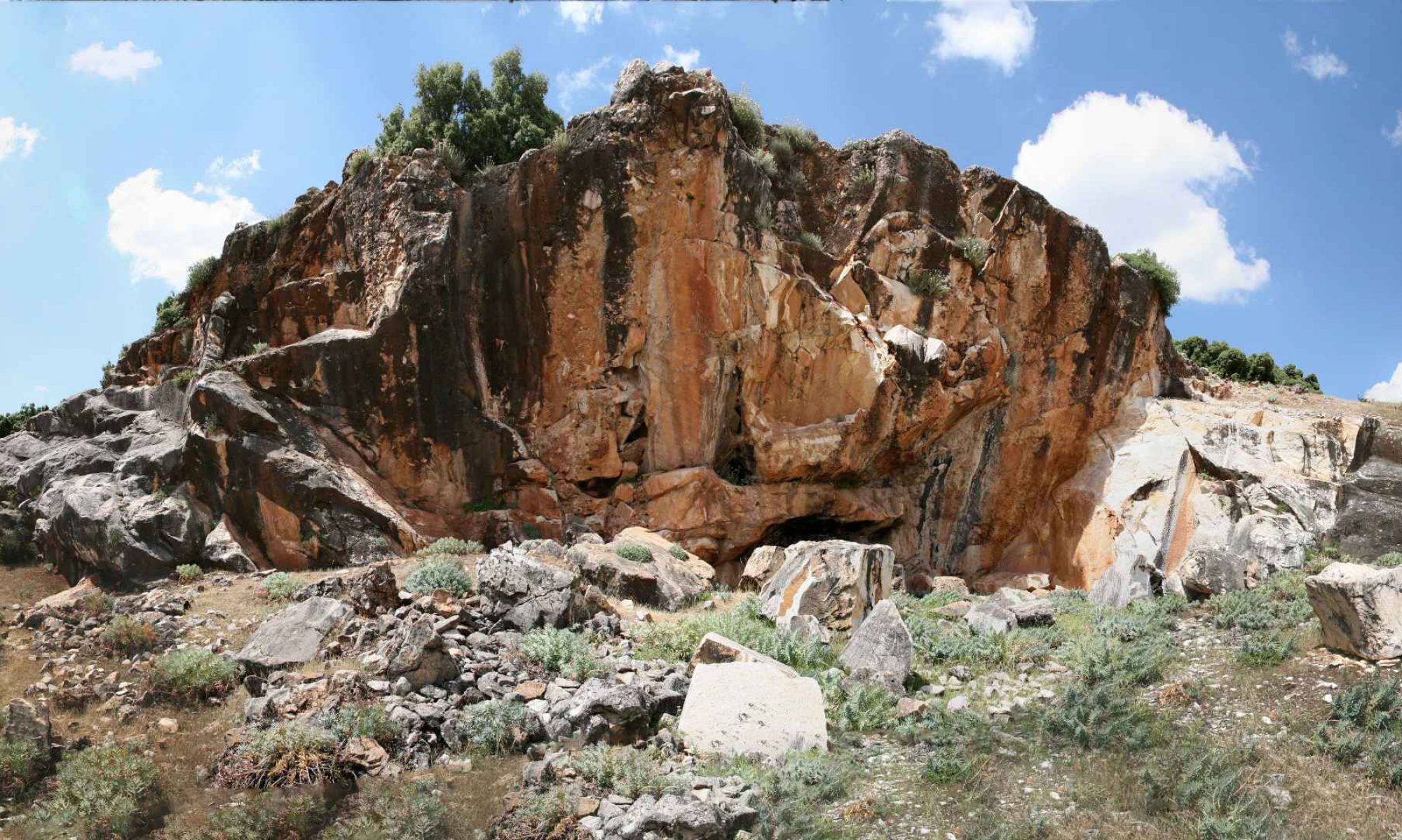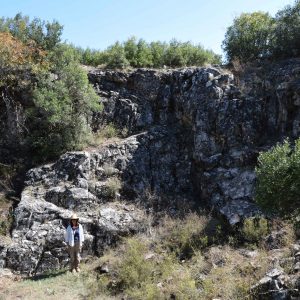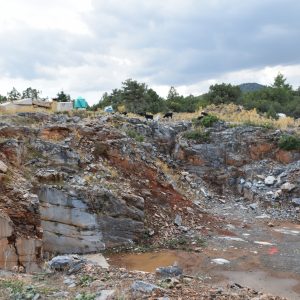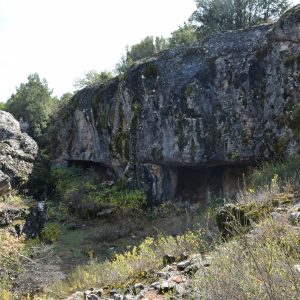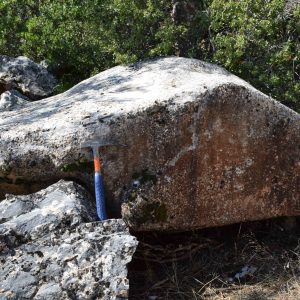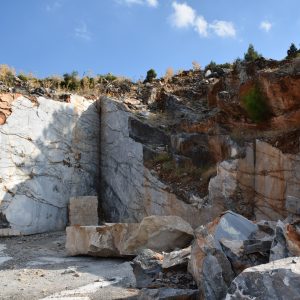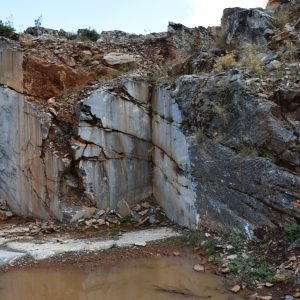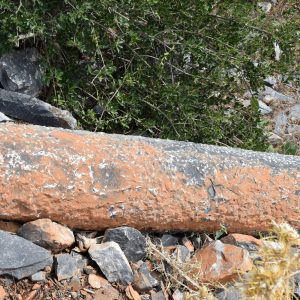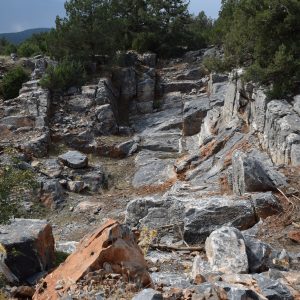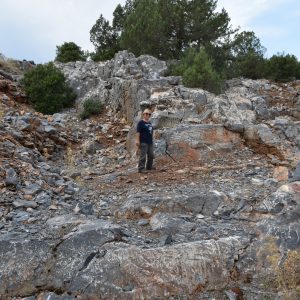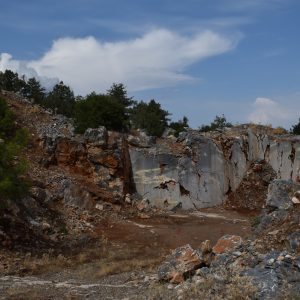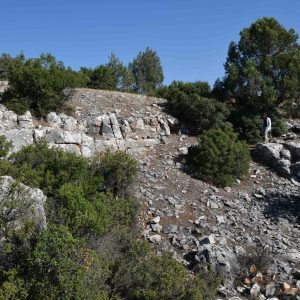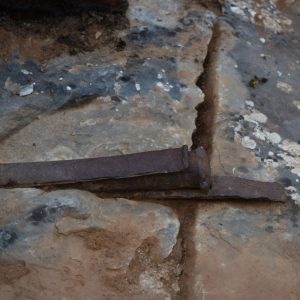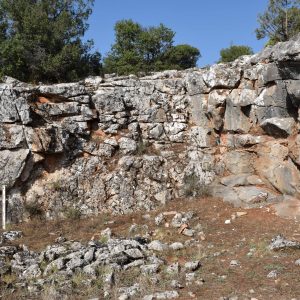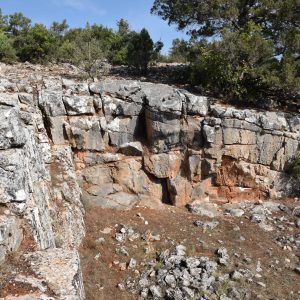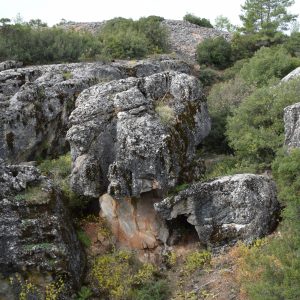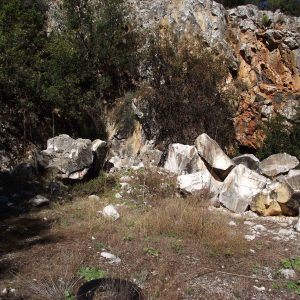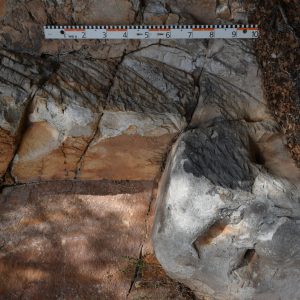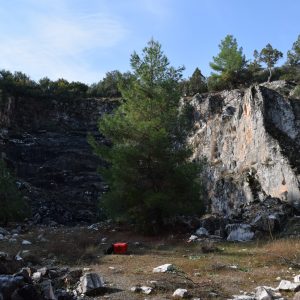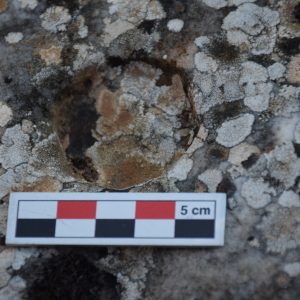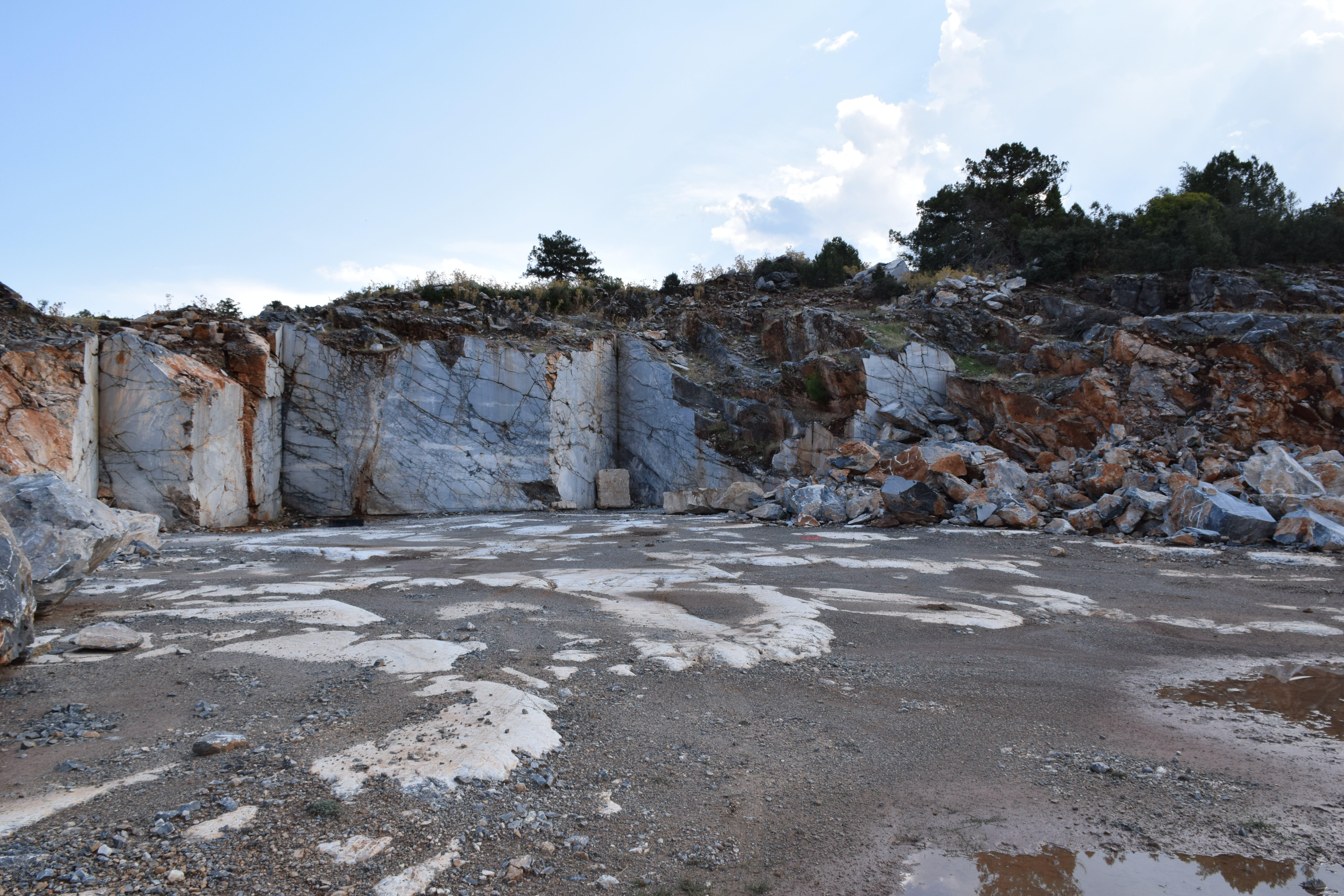
The ancient marble quarries of Göktepe are located in Caria, some 40 km ‘as the crow flies’ southwest of Aphrodisias, on the Çağillar plateau, circa 900 m above sea level. The history of scholarship on Göktepe is very recent and starts with Turkish geologists, Bahadir Yavuz and Hakan Elçi, who drew international attention to a series of quarries situated two and a half kilometres south of the present-day village with this name (Yavuz et al. 2009). Since that time, a series of articles concerning this source of white and black marbles have been published.
According to these studies, the quarries were in use at the beginning of the first century AD with exploitation reaching its zenith from the Hadrianic period onwards. A second peak of activity occurred in the Late Roman Period and lasted until the early fifth century AD (e.g. Attanasio et al., 2009; 2014; 2015a; Bruno et al., 2015). During the fifth or sixth centuries, the quarries were probably settled by a small community of monks (Wielgosz-Rondolino et al. 2020; Nowakowski and Wielgosz-Rondolino forthcoming).
The Italian-Turkish team postulated a significant distribution and use of the Göktepe marbles within the Roman Empire (e.g. in Asia Minor, Greece, North Africa, and Gaul) along with a direct relationship to the local Aphrodisian sculptural workshops and itinerant sculptors working outside of Aphrodisias in the Imperial and Late Roman periods, particularly from the reign of Hadrian onwards (e.g. Attanasio et al., 2015b; Bruno et al., 2013). The scholars, who first discovered and published the quarries, stated the white marble from Göktepe – macroscopically very similar to the marble from Carrara – was an important source in antiquity due to its exceptionally high quality (Yavuz et al., 2009; Attanasio et al., 2013; 2015a; 2015b), but other scholars have questioned this notion (e.g., Lazzarini, 2010; 2011; Sinn et al. 2018). The controversies have emerged mainly around the extent to which Göktepe white marble was exported for the production of high-quality sculpture (Wielgosz-Rondolino et al. 2020).
Geoarchaeological survey conducted by the Marmora Asiatica team in Göktepe quarries focused on four main areas of extraction, labelled after Attanasio et al. (2009) from GO1 to GO4. The capital letters, in the suffix, mark a quarry within a given district. Black limestone quarries are located in clusters GO1 and GO2; at the southernmost edge of the cluster GO2, in a small pit GO2D, an extremely small amount of exploited white marble was also observed. White marble, some of which also contain light grey marble with rudists, was extracted in cluster GO3 and GO4. In total, twenty quarries were documented in Göktepe area, and ten of them were scanned by our team.
Archaeological remains consist of architectural elements, such as column shafts, squared or shapeless roughly dressed blocks, abandoned in the quarries. From Quarry GO3C comes epigraphic evidence: rock inscriptions, and graffiti such as for example various forms of Christian crosses (Attanasio 2009; Bruno et al. 2015; Nowakowski and Wielgosz-Rondnolino forthcoming) – graffiti pictures.
Intensive modern exploitation has obliterated much of the ancient industry, and after a brief pause within the past few years, resumption of extraction has targeted the ancient quarries. Very soon, the ancient quarries will disappear. The only evidence that will survive are the descriptions, pictures, and 3-D scanning images from six quarries, which are thus all the more crucial.
su_[youtube url=”https://www.youtube.com/watch?v=UkKDMl-n9rc” width=”600″ height=”400″ responsive=”yes” autoplay=”no” mute=”no”]
References
- Attanasio, D., Bruno, M., Yavuz, A.B., 2009: ‘Quarries in the region of Aphrodisias: The black and white marbles of Göktepe (Muğla)’. Journal of Roman Archaeology 22, 313–348.
- Attanasio, D., Bruno, M., Landwehr, C., 2012a: ‘I marmi scultorei di Caesarea Mauretaniae (Cherchel, Algeria)’, in M.B. Cocco, A. Gavini, A. Ibba (eds.), L’Africa romana. Trasformazione dei paesaggi del potere nell’Africa settentrionale fino alla fine del mondo antico. Atti del XIX convegno di studio. Sassari 16–19 dicembre 2010. Rome: Carocci, 527–540.
- Attanasio, D., Bruno, M., Prochaska, W., Yavuz, A.B., 2012b: ‘Aphrodisian marble from Göktepe quarries. The Little Barbarians, Roman copies from the Attalid dedication in Athens’. Annual of the British School at Rome 80, 65–87.
- Attanasio, D., Bruno, M., Prochaska, W., Yavuz, A.B., 2013: ‘The Asiatic marbles of the Hadrian’s Villa at Tivoli’. Journal of Archaeological Science 40, 4358–4368.
- Attanasio, D., Bruno, M., Yavuz, A.B., 2014: ‘On the provenance of some sculptural and decorative marbles used at Aphrodisias’. Atti della Accademia Nazionale dei Lincei 25, 105–151.
- Attanasio, D., Bruno, M., Prochaska, W., Yavuz, A.B., 2015a: ‘A multi-method database of the black and white marbles of Göktepe (Aphrodisias), including isotopic, EPR, trace and petrographic data’. Archaeometry 57, 217–245.
- Attanasio, D., Bruno, M., Prochaska, W., Yavuz, A.B., 2015b: ‘Revaluation of the marble provenance of the Esquiline Group Sculptures (Ny Carlsberg Glyptotek, Copenhagen). Following the discovery of the Aphrodisian marble quarries at Göktepe’. Römische Mitteilungen 121, 567–589.
- Bruno, M., Attanasio, D., Yavuz, A. B., 2013: ‘Hadrian’s villa and the use of the Aphrodisian marbles from Göktepe quarries’, in Th. Opper (ed.), Hadrian. Art, Politics and Economy. London: The British Museum, 103–111.
- Bruno, M., Attanasio, D., Prochaska, W., Yavuz, A.B., 2015: ‘An update on the use and distribution of white and black Göktepe marbles from the first century A.D. to late antiquity’, in E. Gasparini, P. Pensabene (eds.), Interdisciplinary Studies on Ancient Stone ASMOSIA X. Proceedings of the Tenth International Conference of ASMOSIA Association for the Study of Marble & Other Stones in Antiquity Rome, 21–26 May 2012. Rome: L’Erma di Bretschneider, 461–468.
- Lazzarini, L., 2010: ‘Recensione di Attanasio et al., 2009’. Marmora 6, 169–171.
- Lazzarini, L., 2011: ‘Controreplica alla replica della mia recensione’. Marmora 7, 123–124.
- Nowakowski, P., Wielgosz-Rondolino D., forthcoming: ‘The Rock Inscriptions and Graffiti from Quarry GO3C at Göktepe, Muğla District (Turkey)’, Anatolian Studies 71, 2021.
- Sinn, F., Vorster, Ch., Lazzarini, L., 2018: ‘Marmoranalyse zu ausgewählten Antiken der Skulpturensammlung SKD Dresden’. Marmora 13, 25–67.
- Yavuz, A.B., Attanasio, D., Elçi, H., Brilli, M., Bruno, M., 2009: ‘Discovery and preliminary investigation of the Göktepe marble quarries (Muğla, Turkey): an alternative source of Aphrodisian marbles’, in P. Jockey (ed.), Λευκος Λιθος. Marbres et autres roches de la Méditerranée antique. Études interdisciplinaires. Paris: Maisonneuve et Larose: 93–109.
- Wielgosz-Rondolino, D., Antonelli F., Bojanowski, M., Gładki, M., Göncüoğlu, M.C., Lazzarini, L., 2020: ‘Improved methodology for identification of Göktepe white marble and the understanding of its use: A comparison with Carrara marble’. Journal of Archaeological Science 113, 2020, 1–20.
